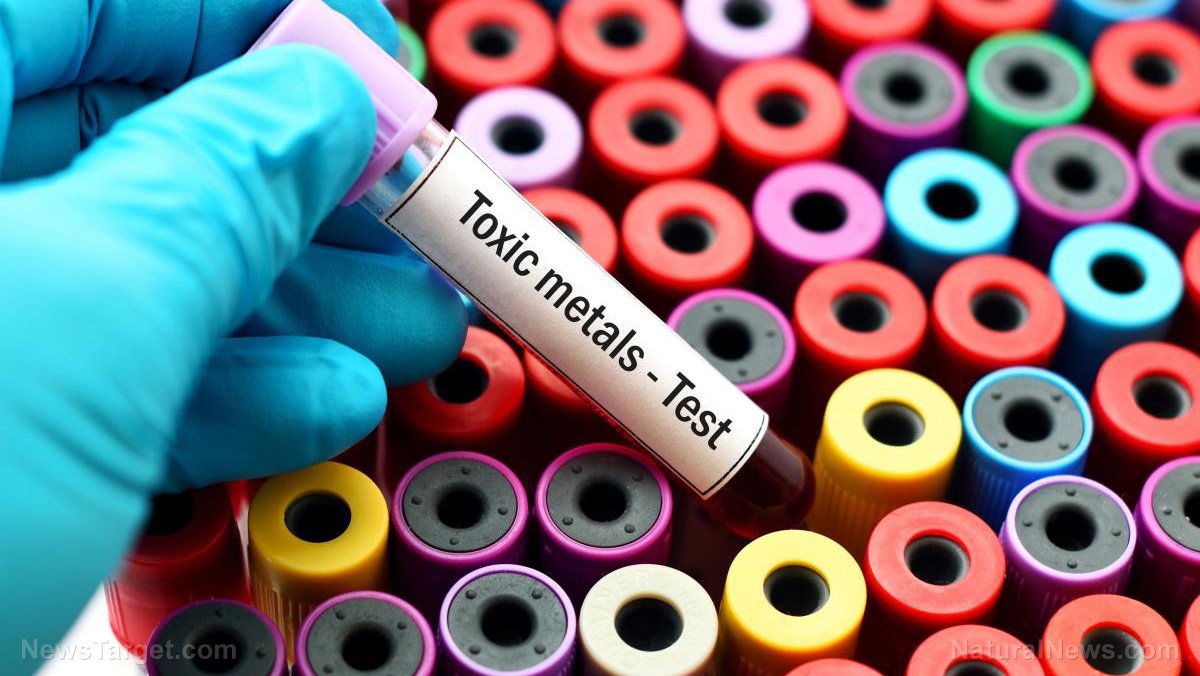- A national investigation found 95% of baby foods tested contained the heavy metals lead, arsenic, cadmium and mercury. Some also contained the rocket fuel component perchlorate
- Apple and grape juice, oat ring cereal, macaroni and cheese, puff snacks and rice-based foods had the highest levels of heavy metals
- Heavy metals are developmental neurotoxins that can harm a baby’s developing brain and nervous system
- Organic food may still contain heavy metals due to the presence of heavy metals in soil
- There are several ways parents can safeguard their infant’s food, including making their own or using organic or biodynamically-grown vegetables
A national investigation commissioned by Healthy Babies Bright Futures (HBBF) recently made a disturbing finding. A shocking 95% of baby foods tested contained the heavy metals lead, arsenic, cadmium and mercury.1
I have often written about how most commercial infant formulas are high in processed sugar and questionable ingredients including soy. They can contain as much sugar as a can of soda yet lack the benefits of the natural sugars found in breast milk.
Worse, most formulas also contain genetically modified organisms (GMOs), synthetic vitamins, inorganic minerals, excessive protein and harmful fats while lacking vital immune-boosting nutrients found in breast milk.
Still, the new findings about poisons like heavy metals lurking in baby food add urgency to the problem and raise questions about how parents can safely feed their infants.
Related: Circumcision Linked to Sudden Infant Death Syndrome
Disturbing Findings About Baby Food
Parent volunteers working with HBBF’s partner organizations were asked to buy the most prominent baby food brands at their local stores or online.
The organizations the parents worked with were the Alaska Community Action on Toxics, Campaign for Healthier Solutions, Coming Clean, Ecology Center, Environmental Justice Health Alliance, Getting Ready for Baby, Learning Disabilities Association of America, Organizacion en California de Lideres Campesinas Inc., and Texas Environmental Justice Advocacy Services.2
The foods selected by the parents included 61 brands and 13 food types, including infant formula, teething biscuits, cereals and fruit juices. The results were staggering. Lead was found in 94% of the baby foods; cadmium and arsenic in approximately 75% of the items; and mercury in just under 33% of the products.
Fifteen of the baby foods accounted for 55% of the heavy metal contaminants. These included apple and grape juice, oat ring cereal, macaroni and cheese, puff snacks and rice-based foods. Rice foods such as cereal and rice-based snacks account for one-fifth of the risks babies face, as these foods have high levels of arsenic, as well as the other three metals, HBBF says.3
Related: Autism Correlates with Circumcision
Contaminants Threaten Babies’ IQs
The presence of heavy metals in baby food has been known for a decade, but the HBBF’s study sheds new light on just how widespread the contamination is, and the specific risks babies and toddlers may face from such foods, especially to their IQs. An excerpt from the report reads:4
“The four heavy metals we found in baby food have a unique significance. All are developmental neurotoxins … They can harm a baby’s developing brain and nervous system, both in utero and after birth, for impacts that include the permanent loss of intellectual capacity and behavioral problems like attention-deficit hyperactivity disorder (ADHD).
All four metals are linked to IQ loss from exposures early in life. The scientific evidence spans decades and continues to build: at least 23 studies published in the past seven years confirm these four heavy metals’ impacts to a child’s healthy development …
These metals are so prevalent in foods eaten by babies and toddlers that every child could be exposed daily to all three of the most common heavy metals detected in food — lead, arsenic, and cadmium — based on an analysis of federal surveys of children’s dietary patterns and heavy metals levels in food …”
Rocket Fuel Component Also Found in Baby Food
Related: Johnson And Johnson Knew Asbestos Was In Baby Powder, More Lawsuits Are Coming
Heavy metals are not the only IQ-lowering substances found in baby food, according to HBBF. The industrial chemical perchlorate, a rocket fuel component, was also detected, and this dangerous substance adds to the cognitive risks posed by heavy metals, HBBF says:5
“Perchlorate disrupts thyroid functions crucial to brain development and has been linked to IQ loss among children born to mothers with thyroid dysfunction, who are more vulnerable to perchlorate toxicity …
It is a rocket fuel component used since the Cold War. In 2005 FDA approved its use as an antistatic in plastic food packaging, and in 2016 expanded the approval to cover dry food handling equipment.
Perchlorate is also a degradation product of hypochlorite used to disinfect food processing equipment. Levels in children’s food increased dramatically from 2005 to 2012 …”
This is not the first time perchlorates — salts derived from perchloric acid used in the ways described above — have been found in baby food. Researchers from the Centers for Disease Control and Prevention found 15 brands of powdered infant formula were contaminated with the substance 10 years ago.6
Most people are exposed to perchlorate through their diet, in the form of contaminated water and/or foods. But the exposure infants receive may be far greater than that of adults if they are fed infant formula, as the toxin may be present in both the formula and the milk or water used to prepare it.
Perchlorate blocks the thyroid gland from taking up iodine, which can have a serious effect on a developing fetus and infant whose neurodevelopment depends on access to iodine.7 The harmful impact of perchlorate is also mediated by other endocrine disruptors that affect the thyroid found which might be found in the environment.
Related: Nurses Against Circumcision
Even Organic Baby Food Poses Risks
Sadly, parents can’t “shop their way out of” the toxic heavy metal problem by buying organic products, HBBF warns. Heavy metals are everywhere — they naturally occur in the soil, but pesticides, fertilizers, factory farms and other environmental pollution greatly increase their presence.
Because heavy metals are in the soil (whether deposited there naturally or through artificial means), leafy greens and root vegetables like carrots and sweet potatoes take up and retain them to a greater degree than fruits and above ground crops.
While parents may decide to buy organic foods and make their own baby food, this does not entirely solve the problem because organic standards do not set strict limits for such contaminants; both adult and baby foods may contain heavy metals.8
Parents also cannot rely on bottled water to avoid heavy metals. Bottled water is no safer than filtered tap water and generates toxic plastic waste to boot.9 In a previous article, I noted that that microplastics are also found in bottled water.
Parents Should Beware of Fruit Juices
The HBBF report recommends against giving babies and toddlers fruit juices for two reasons. First, because common juices like apple and grape contain heavy metals and secondly because parents tend to give excessive amounts of juices to their children. This means the metal levels can build up.
According to a consensus statement from the American Academy of Pediatrics, the Academy of Nutrition and Dietetics, the American Heart Association and the American Academy of Pediatric Dentistry, “Even 100% fruit juice offers no nutritional benefits over whole fruit.”10
There are other reasons to shun juice, say child and medical experts. Fruit juices can cause weight gain and lifelong obesity to the same degree as soft drinks, and their effect on teeth is equally destructive.
Most parents probably don’t realize that giving their child apple juice is akin to giving them a Coke, but metabolically, and in terms of dental health, it is. The lack of protein and fiber in juice counteracts any nutritional benefits, add the experts.11
Over seven years ago, Dr. Oz and Consumer Reports exposed high levels of arsenic in fruit juices. A full 10% of juice tested by Consumer Reports exceeded federal drinking-water standards for arsenic in the U.S.
Low-level chronic exposure to arsenic can lead to gastrointestinal problems, skin discoloration and hyperkeratosis, chronic fatigue syndrome, high blood pressure, diabetes, reproductive problems, neurological problems, various cancers and reduced IQ, as cited in the HBBF report.
Rice Is Also a Harmful Baby Food
Though pediatricians continue to tell parents that rice cereal mixed with breast milk or formula should be a baby’s first meal, it is irresponsible advice that I have always resisted.
Acclimating infants to the taste of highly processed white rice could set them up for a lifetime of bad eating habits and put them at risk for diabetes.12 The way that white rice is processed strips away vitamins, fiber and other nutrients. The rice that is left turns to sugar and raises insulin levels.
Since rice is submersed in water to grow, it also readily absorbs inorganic arsenic, which is the most harmful kind of arsenic. “Rice cereal has six times more arsenic than other types of cereal, like oatmeal and multigrain,” says Jane Houlihan, HBBF’s national director of science and health.13
“I have not been recommending rice cereal as a first food for many years, because I prefer babies eat whole grains with more nutrition,” agrees pediatrician Dr. Tanya Altmann.14 So, just how can baby food be made safe? Government clearly needs to do more, says the HBBF report, pointing out that:15
“FDA can use its testing programs, recall authority, and guidance to industry, among other tools, to characterize and control heavy metal levels in food. The agency tests a fraction of imported food in their Import Program, prioritizing food likely to pose risks to consumers, including those with high heavy metals levels.
Federal law gives FDA the authority to require a recall of food it deems to be adulterated, that ‘bears or contains any poisonous or deleterious substance which may render it injurious to health,’ including heavy metals …
Despite FDA’s many areas of authority and its recent emphasis on reducing exposures to heavy metals, for 88 percent of baby foods tested by HBBF — 148 of 168 baby foods — FDA has failed to set enforceable limits or issue guidance on maximum safe amounts. And none of the agency’s existing guidance considers the additive neurological impacts of multiple metals in baby food.”
How Can Parents Ensure Baby Food Safety?
I have often written about how parents can make sure their babies and toddlers eat the most nutritious and safest foods. For instructions on how to make your own homemade baby formula, see “The U.S. Campaign Against Breastfeeding.” Here are a few other ideas sparked by the HBBF report that appeared on CNN:
| Feed your baby a variety of healthy foods — This will help children be less picky eaters and avoid future food allergies.16 |
| Choose snacks carefully — Rice teething rusks and other teething biscuits have little nutrition. |
| Reduce juice — Water and milk should be the drinks of choice. |
| Serve carrots and sweet potatoes less frequently — When you do, peel them carefully and cook them in water that is then disposed. |
| Minimize the use of plastic, especially with reheating foods — Heat causes dangerous plastics to leach into the food. |
| Steam and puree organic or biodynamically grown vegetables — Cool them in small glass containers, then freeze and put in bigger containers. |



